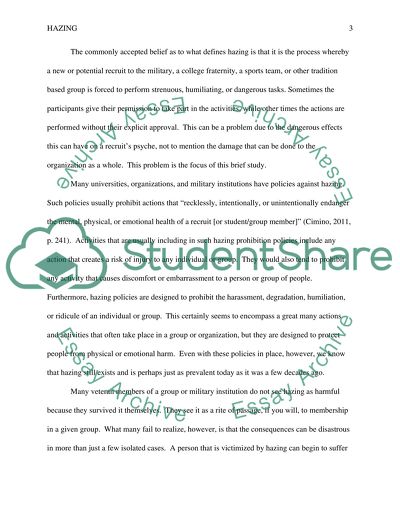Cite this document
(“Hazing and how Hazing affects the military Essay”, n.d.)
Retrieved from https://studentshare.org/sociology/1463841-hazing-and-how-hazing-affects-the-military
Retrieved from https://studentshare.org/sociology/1463841-hazing-and-how-hazing-affects-the-military
(Hazing and How Hazing Affects the Military Essay)
https://studentshare.org/sociology/1463841-hazing-and-how-hazing-affects-the-military.
https://studentshare.org/sociology/1463841-hazing-and-how-hazing-affects-the-military.
“Hazing and How Hazing Affects the Military Essay”, n.d. https://studentshare.org/sociology/1463841-hazing-and-how-hazing-affects-the-military.


